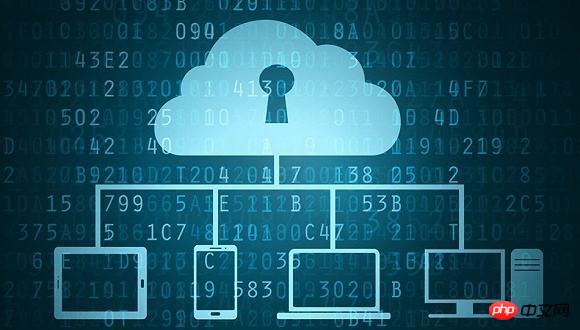Today, ensuring the security of customer data stored in the cloud is a growing challenge for organizations. The number of cyber threats continues to grow, as well as their quality and sophistication.
According to research firm Gartner, 80% of all data leaks that occur in the cloud are caused by misconfiguration, account management and other errors by the IT department, rather than from the cloud computing provider cloud platform loopholes. Therefore, IT companies must focus on their internal business processes and personnel training to enhance overall security.

Another study showed that 64% of enterprises believe that cloud computing infrastructure is more secure than traditional data centers. Among enterprises adopting cloud computing, 75% have adopted additional protection measures beyond those provided by the cloud computing provider. For these additional security measures, 61% of enterprises adopt data encryption, 52% of enterprises adopt stricter access policies, and 48% of enterprises adopt frequent system audits.
Cyber attackers do not care whether the data is located on a virtual machine or a physical machine, their goal is to gain access by any means. Therefore, to protect data in the cloud, enterprises want to be able to use the same tools they have in the data center. Security experts have identified three main measures to keep cloud computing secure: data encryption, limited data access, and data recovery in the event of an attack (such as ransomware).
In addition, experts recommend studying the API carefully. Because open and unprotected interfaces can become a weak link in data protection and a major vulnerability in cloud computing platforms.
Analytics and Machine Learning
To solve many security problems, enterprises can use artificial intelligence (AI) technology. Artificial intelligence frameworks and machine learning help automate data protection and streamline the execution of daily tasks. Artificial intelligence provides services in public and private cloud infrastructure to enhance their security.
An example of this approach is the open source project MineMeld, which develops security policies and dynamically adjusts configurations based on threat data from external sources. It may, in some cases, address all of a specific company's needs. Another example is the Gurucul cloud analytics platform, which uses behavioral analytics and machine learning to detect external and insider threats.
Encrypted Data
Enterprises do not need to encrypt all data. To ensure security, businesses need a detailed policy. First, decide which of your data needs to be in the cloud and where your traffic will be. Only then can it be decided which information is worth encrypting.
Before strengthening security measures, companies evaluate their feasibility. The costs of introducing new measures should be assessed and compared with the potential losses caused by a data breach. In addition, enterprises should also analyze the impact of encryption, access control, and user authentication on system performance.
Data protection can be implemented at multiple levels. For example, all data sent by users to the cloud can be encrypted using the AES algorithm, which provides anonymity and security. The next level of protection is data encryption in cloud computing storage servers. Cloud computing providers often store data in multiple data centers to help protect customer information through redundancy.
Infrastructure Monitoring
When moving to the cloud, many customers need to implement new security policies. For example, they must change the settings of their firewalls and virtual networks. According to a study conducted by Sans, data center users are concerned about unauthorized access (68%), application vulnerabilities (64%), malware infections (61%), social engineering and non-compliance (59%). and insider threats 53%).
At the same time, attackers can almost always find a way to break into a system. Therefore, the main task of enterprises is to prevent attacks from spreading to other parts of the network. This can be implemented if the security system blocks unauthorized interactions between workloads and prevents illegal connection requests.
There are also many products that can monitor data center infrastructure. Cisco, for example, gives IT managers a complete picture of network activity, allowing them not only to see who is connected to the network but also to set user rules and manage what people are supposed to do and what access they have.
Adopt Automation Tools
Another way to improve data center reliability is to combine security systems with DevOps practices. Doing so allows businesses to deploy new applications faster and introduce changes faster. An adaptive security architecture should be integrated with management tools so that changes to security settings become part of the continuous deployment process.
In cloud computing infrastructure, security becomes an integral part of continuous integration and continuous deployment. It can be provided through tools such as Jenkins plugins, which make code and security testing an indispensable stage of quality assurance. Other DevOps tools for security testing and monitoring include static analysis (SAST) and dynamic analysis (DAST) solutions. Static analysis (SAST) can analyze the source code of an application in a static state and identify its security vulnerabilities. Dynamic Analysis (DAST) detects potential security vulnerabilities while the application is running.
In the past, a separate team would handle product security issues. But this approach increases the time spent working on the product and doesn't eliminate all bugs. Today, security integration can occur in multiple directions and even uses separate terms: DevOpsSec, DevSecOps, and SecDevOps. There is a difference between these terms. People should consider security at all stages of product development, including cloud computing infrastructure.